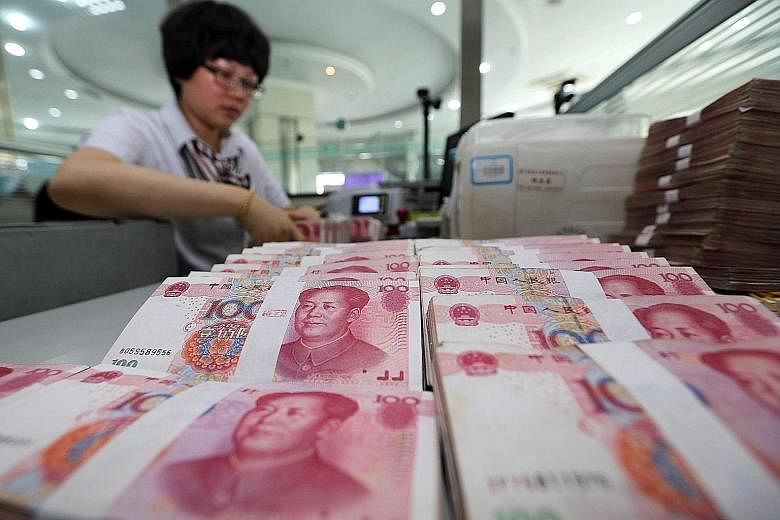China stunned markets yesterday when it devalued its tightly controlled currency, a move viewed by some as a bid to boost exports from the flagging economy.
The surprise move sent the yuan diving to levels last seen in 2012, hammered regional currencies and sparked speculation over China's growth outlook.
The devaluation triggered a bloodbath across regional currency markets, with the Singapore currency falling sharply against the greenback to 2010 levels.
One US dollar could buy about $1.40 Singapore dollars yesterday, from about $1.39 at the previous close.
The Malaysian ringgit and Indonesian rupiah sank against the US dollar to depths reached during the Asian financial crisis 17 year ago.

The South Korean won also turned weaker to hover around a three-year trough against the greenback, while the Australian currency fell to its lowest level since 2009.
The People's Bank of China effected the devaluation by cutting its daily reference rate for the yuan by a record 1.9 per cent. It called the change a one-time adjustment, adding that it plans to keep the yuan stable at a "reasonable" level and will strengthen the market's role in determining the level.
Growth in China has slowed markedly this year and is set to hit a 25-year low even if it meets its official 7 per cent target.

Credit Suisse economists Tao Dong and Deng Weishen said in a report yesterday that the latest trade figures pointed to an across-the-board weakness in exports, substantially worse than what global demand had indicated.
"In other words, surging costs with a strong currency undermined China's export competitiveness," they added.
Still, Mr Tao and Mr Deng do not believe that China will "engineer a big devaluation", or a few consecutive devaluations, in an attempt to boost exports.
"It would take much bigger action to ease the pain among exporters but, in our view, that is not on the high priority list of decision makers."
China's central bank remains concerned about capital flowing out of the country at an increased rate in the wake of an outsized exchange rate devaluation, they added.
Some economists said the move was not just a reaction to weak export figures, but was linked to Beijing's push for the yuan to be included in a basket of reserve currencies known as Special Drawing Rights (SDR), which are used by the International Monetary Fund to lend money to sovereign borrowers.
China's central bank aims to make the yuan a freer floating and more accessible currency, and the market-driven fixing system is likely to reinforce its commitment to reform and increase the odds for the yuan to be included in the SDR basket, said OCBC economist Tommy Xie.
Phillip Futures investment analyst Howie Lee, however, said the devaluation "signals that all is really not well with the Chinese economy... and it also puts into serious doubt whether the International Monetary Fund will allow the yuan into the Special Drawing Rights of currencies."
SEE OPINION:
China struggles to get off the back of command economy
Emerging consensus is that Chinese yuan is no longer undervalued

